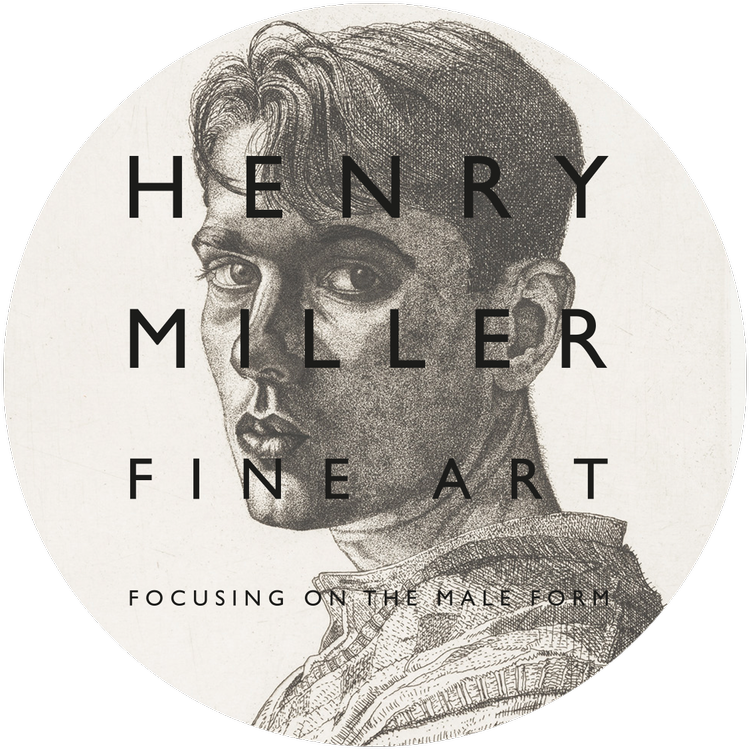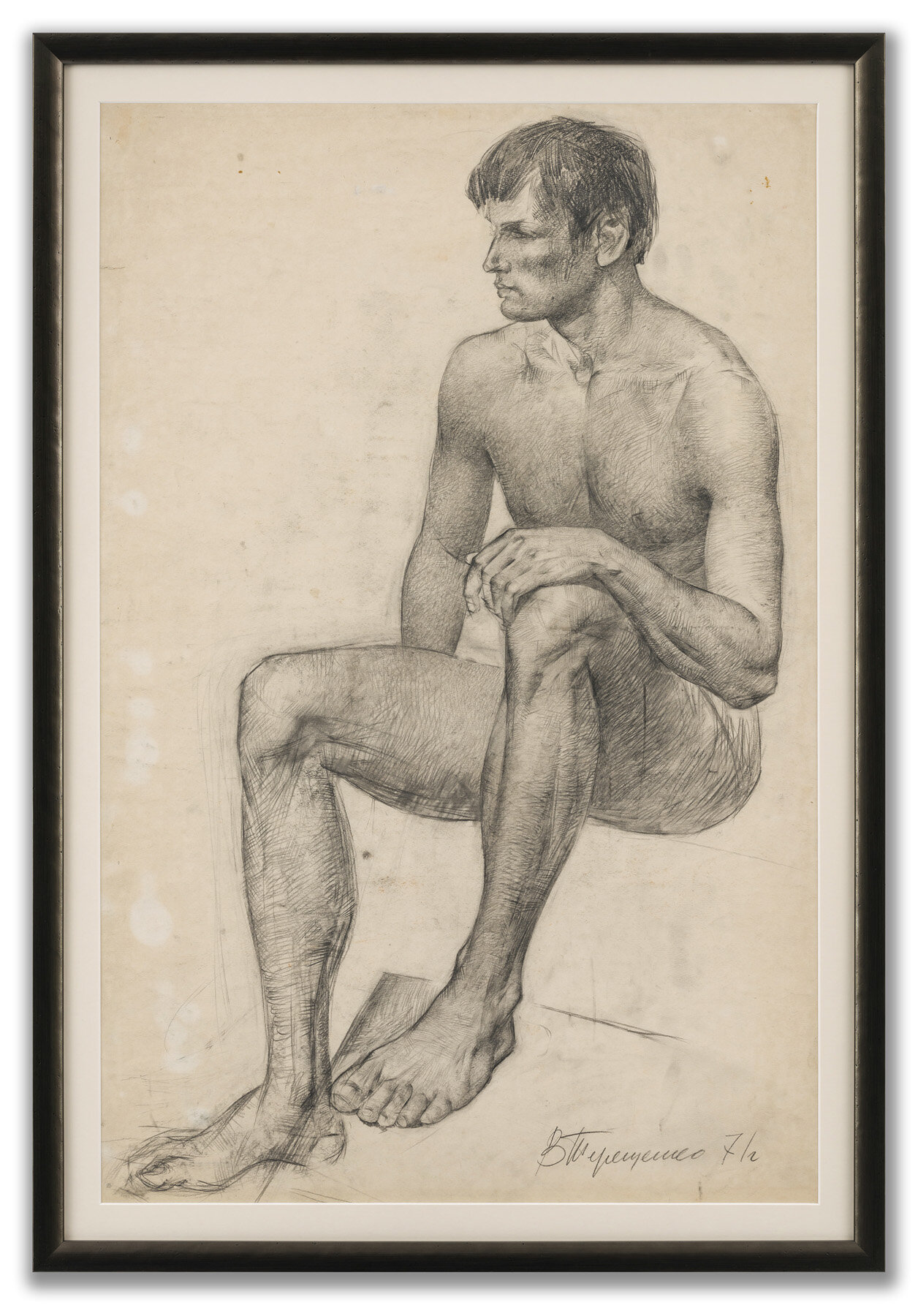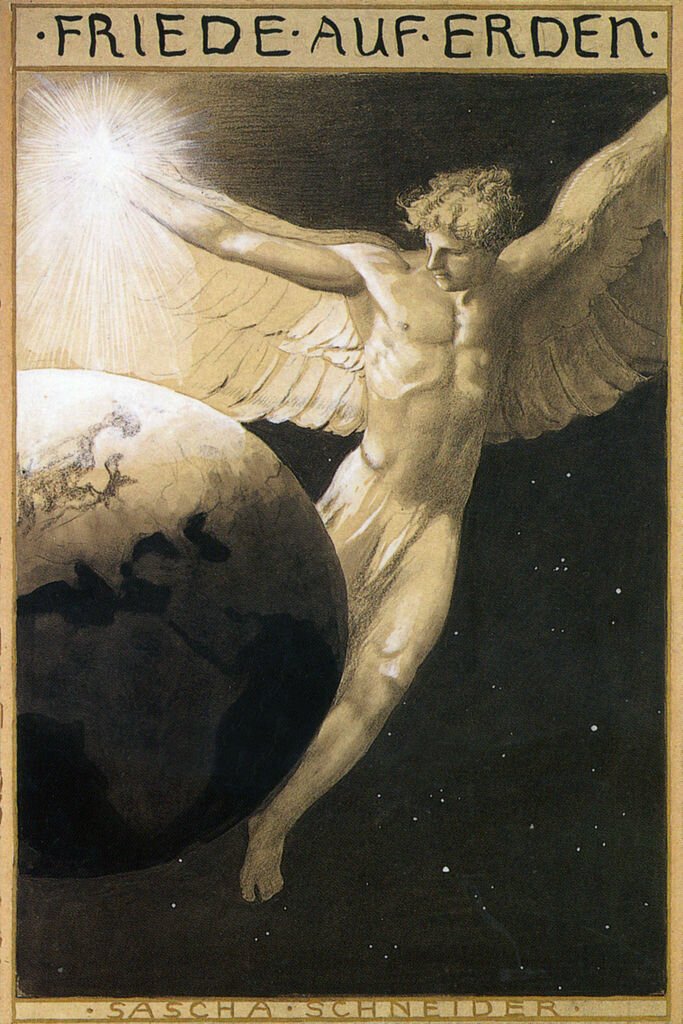Patrick Hennessy, R.H.A, (Irish 1915-1980), Bound Figure.
Pastel on paper (fixed to board), signed (lower right), 110cm x 77cm, (120cm x 89cm framed), £5,000.
Throughout his career, but especially in the early years, Hennessy made a living from flower paintings, still-lives and portrait commissions. However, alongside this conventional output, he also created a body of work which was far more personal and, for its time, ground-breaking. He addressed issues of masculinity, sexual identity and homosexuality, which, for post-war Ireland where it was still illegal and considered morally repugnant, was highly extraordinary and extremely brave. A major retrospective of Hennessy’s work was held at the IMMA Dublin in 2016. Discovered in Paris, this work is possibly from the period immediately prior to WWII, when Hennessy was briefly resident there.
For further information about Patrick Hennessy, please click HERE
ART FOR £1,000 or LESS
In addition to the wider collection, the catalogue of works for sale at £1,000 or less remains online, with free domestic shipping for unframed works, and the remainder of shipping at cost.








































